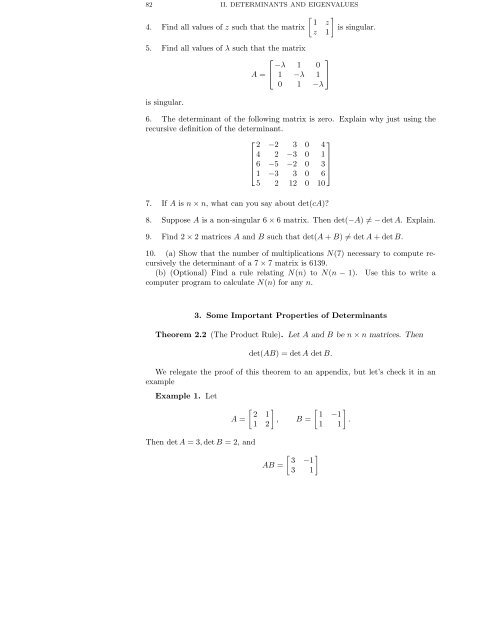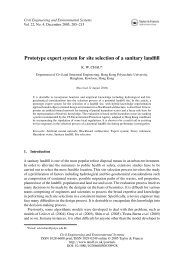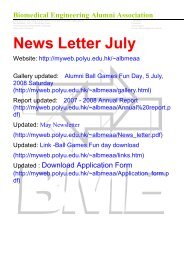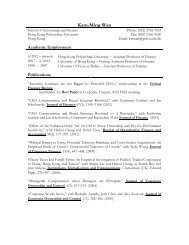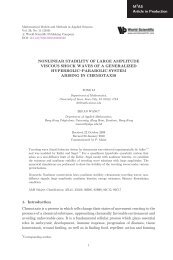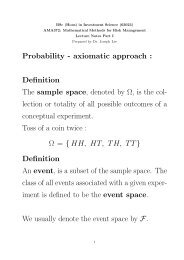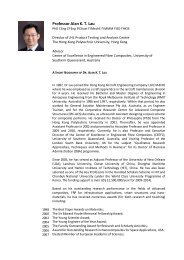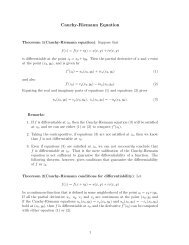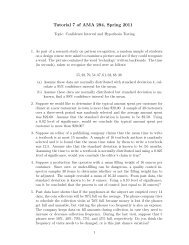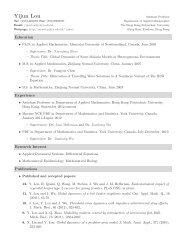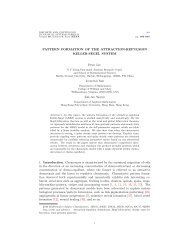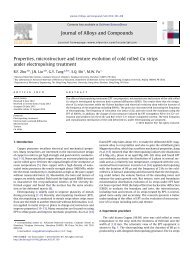DETERMINANTS AND EIGENVALUES 1. Introduction Gauss ...
DETERMINANTS AND EIGENVALUES 1. Introduction Gauss ...
DETERMINANTS AND EIGENVALUES 1. Introduction Gauss ...
Create successful ePaper yourself
Turn your PDF publications into a flip-book with our unique Google optimized e-Paper software.
82 II. <strong>DETERMINANTS</strong> <strong>AND</strong> <strong>EIGENVALUES</strong>4. Find all values of z such that the matrix5. Find all values of λ such that the matrixA =⎡⎣ −λ 1 1 −λ 01⎤⎦0 1 −λis singular.[ ]1 zis singular.z 16. The determinant of the following matrix is zero. Explain why just using therecursive definition of the determinant.⎡⎤2 −2 3 0 44 2 −3 0 1⎢ 6 −5 −2 0 3⎥⎣⎦1 −3 3 0 65 2 12 0 107. If A is n × n, what can you say about det(cA)?8. Suppose A is a non-singular 6 × 6 matrix. Then det(−A) ≠ − det A. Explain.9. Find 2 × 2 matrices A and B such that det(A + B) ≠ det A + det B.10. (a) Show that the number of multiplications N(7) necessary to compute recursivelythe determinant of a 7 × 7 matrix is 6139.(b) (Optional) Find a rule relating N(n) toN(n−1). Use this to write acomputer program to calculate N(n) for any n.3. Some Important Properties of DeterminantsTheorem 2.2 (The Product Rule). Let A and B be n × n matrices. Thendet(AB) = det A det B.We relegate the proof of this theorem to an appendix, but let’s check it in anexampleExample <strong>1.</strong> LetA =[ ]2 1, B =1 2[ ]1 −<strong>1.</strong>1 1Then det A =3,det B = 2, andAB =[ ]3 −13 1


